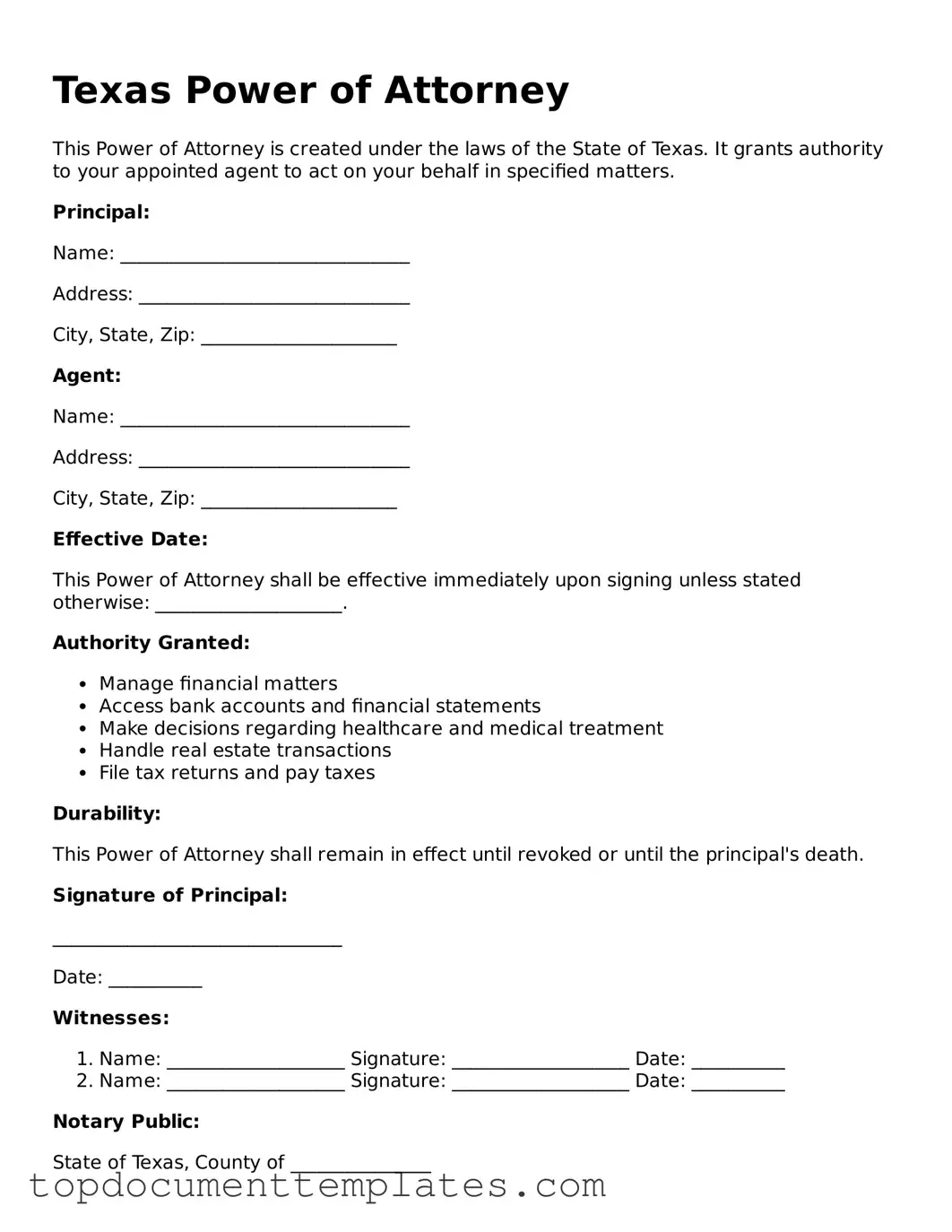The Texas Power of Attorney form serves as a crucial legal tool that allows individuals to appoint someone they trust to make decisions on their behalf. This form can cover a variety of areas, including financial matters, healthcare choices, and real estate transactions. By granting this authority, a person can ensure that their wishes are respected, even if they become unable to communicate them directly. The form can be tailored to be effective immediately or to take effect only under specific circumstances, such as incapacitation. Additionally, it can be limited to particular tasks or general in nature, allowing for flexibility based on individual needs. Understanding the nuances of this document is essential for anyone considering its use, as it not only empowers the designated agent but also protects the interests of the person granting the authority. The process of creating and executing a Power of Attorney in Texas involves specific requirements to ensure validity, making it important to follow the guidelines closely. By doing so, individuals can navigate the complexities of their personal and financial affairs with confidence.
